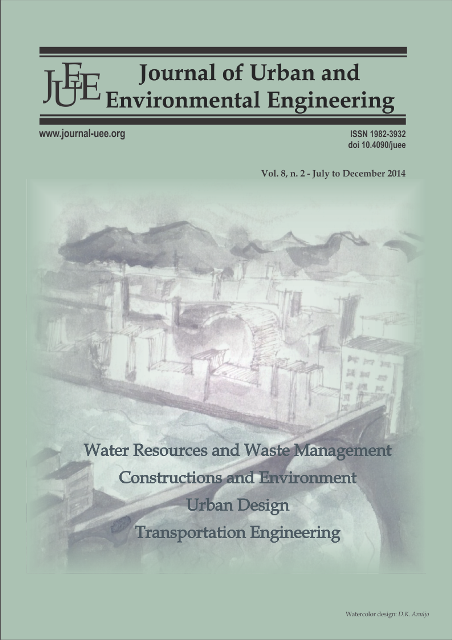ASSESSMENT OF THE CAPABILITY OF 3D STRATIFIED FLOW FINITE ELEMENT MODEL IN CHARACTERIZING MEANDER DYNAMICS
DOI:
https://doi.org/10.4090/juee.2014.v8n2.155-166Keywords:
meander dynamics, flow structures, helical flow, sediment transport, sedimentation, deposition, finite element methods, RMA-10, RMA-11Abstract
There have been attempts to simulate meander dynamics (Langbein and Leopold 1966, Oodgard 1989, Campoerale et. al 2007, da Silva and El-Tahawy 2008, Duan and Julien 2010, Blanckaert and de Vriend 2010, Esfahani and Keshavarzi 2011). Meandering geometry is complex phenomena (Chanson 2004, Wu 2008), this would include the dynamics of flow properties and of morphology. Simulating meander flow dynamics is mostly popular using either Finite Element Method (FEM) or Finite Volume Method (FVM) where are based on Eulerian description, and based on stationer grid-based methods (Wormleaton and Ewunetu 2006, Wu 2008, Duan and Julien 2010, Gomez-Gesteira et. al 2010). As such this model is lack of capability in simulating the dynamics of meander morphology; much effort is put through to overcome this issue with such as Smoothed Particle Hydrodynamics (SPH), Boundary Element Methods, Arbitrary Lagrangian Eulerian, etc. This paper has two objectives; to identify meander flow characteristics and sediment transport distribution patterns, and to simulate meander flow characteristics and sediment transport distribution patterns using FEM. This study has identified that the key of dynamics of flow characteristics are helical flow and coherent structures, and the key of dynamics of transport characteristics are erosion-deposition zone patterns. The finite element model using in this study, RMA has shown its capability to simulate the meander key characteristics above, for small deflection angles (30°) location of maximum erosion-deposition zones near the crossover of the sinuosity, for intermediate deflection angles (70°) location of maximum erosion-deposition zones between the crossover and apex of the sinuosity, and for large deflection angles (110°) location of maximum erosion-deposition zones near the apex of the sinuosity, these are agreed with experiments of Odgaard 1989, da Silva 2006, da Silva et. al 2006, and Esfahani and Keshavarzi (2012). These results can be used as a reference to develop a method to model meander morpho-dynamics.Downloads
Download data is not yet available.
Downloads
Published
2015-09-20
Issue
Section
Articles




